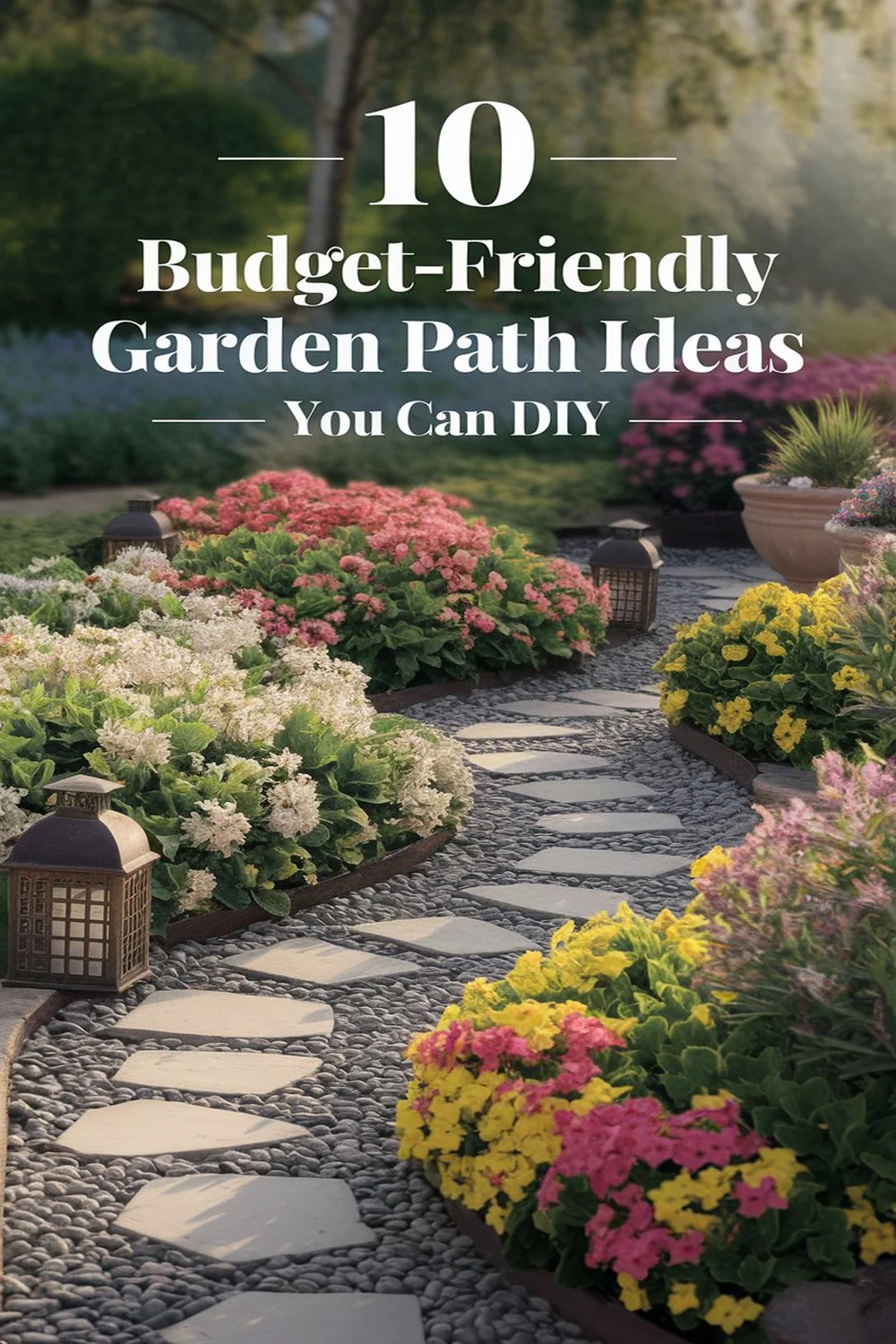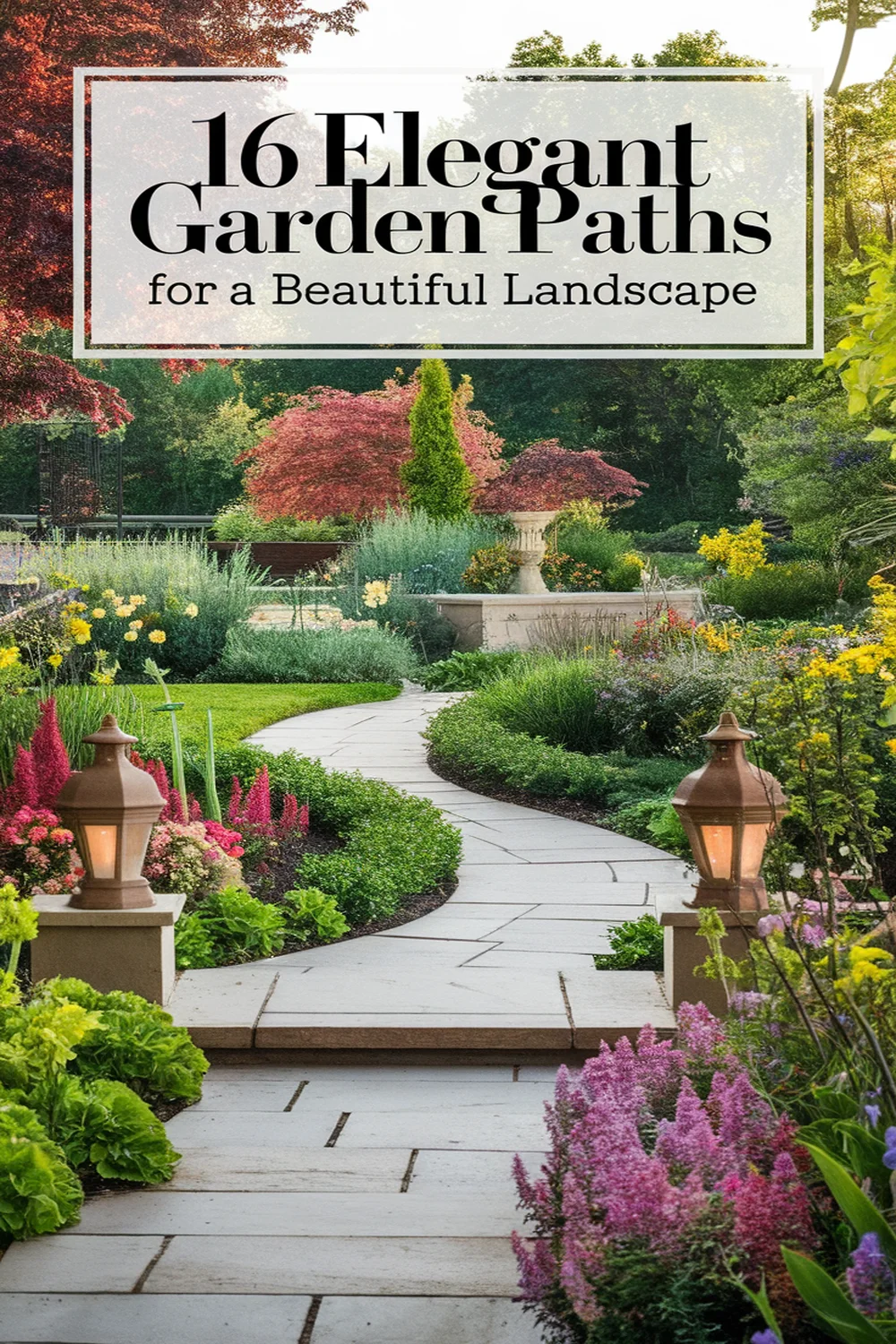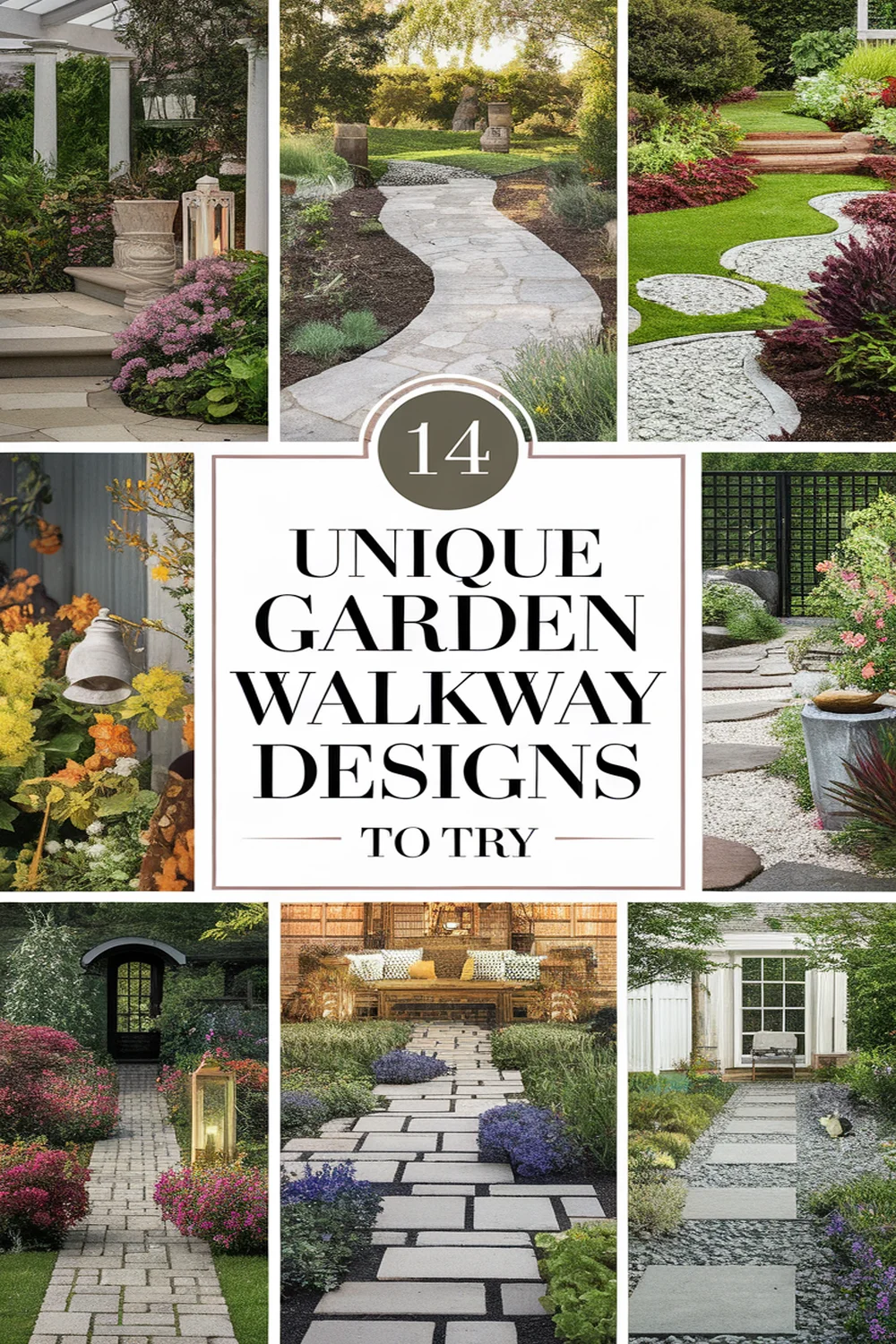This post may contain affiliate links. Please read our policy page.
Creating a budget-friendly garden path is easier than you think! Consider using gravel for its natural beauty and drainage, or repurposed brick pavers for a rustic charm. Stepping stones add uniqueness, while mulch paths are eco-friendly and enrich the soil. Wooden pallets and painted rocks can create whimsical walkways, and flower bed edging offers a cost-effective solution. Want to explore even more creative ideas? There’s plenty more to discover!
Gravel Pathways for Natural Beauty

When you want to create a stunning yet budget-friendly garden path, gravel pathways offer a natural charm that enhances any outdoor space. They’re easy to install and require minimal maintenance, making them a popular choice. Start by determining the path’s layout; mark the area using string or stakes. Next, dig about three inches deep to prepare for your gravel. Lay down landscape fabric to prevent weeds from growing through. Pour your chosen gravel—options like pea gravel or crushed stone work beautifully—and spread it evenly. You can also add borders, like wooden edgings or stones, to keep the gravel contained. A gravel path not only beautifies your garden but also provides excellent drainage, ensuring your outdoor space thrives. Enjoy your new path!
Repurposed Brick Pavers for Rustic Appeal
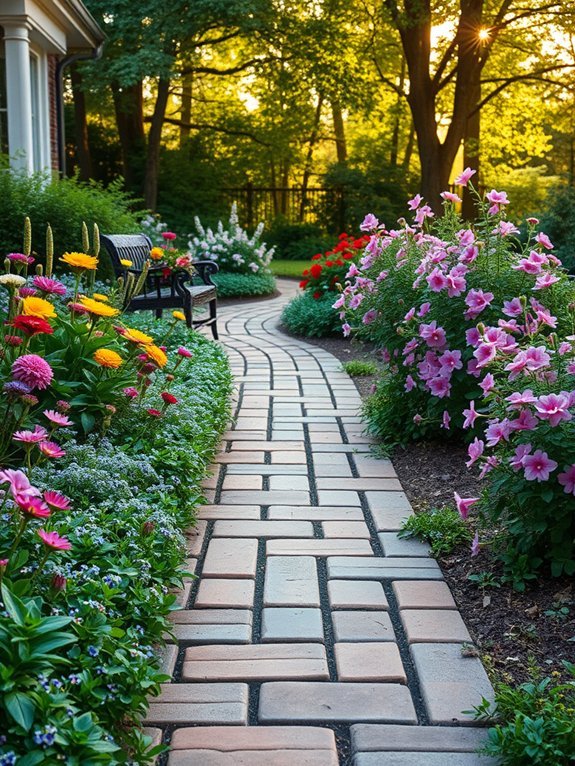
Transform your garden with the rustic charm of repurposed brick pavers that not only elevate the aesthetics but also serve as a sustainable choice. Sourcing used bricks from local demolition sites or online marketplaces can save you money while adding character to your space. Lay the bricks in a herringbone or basketweave pattern for a visually striking effect. Make sure to clear the path area, compact the soil, and add sand for stability before placing the pavers. To enhance their appeal, consider planting ground cover plants between the pavers. Over time, these plants will soften the brick edges and create a beautiful, integrated look with your garden. Enjoy a charming path that’s eco-friendly and budget-friendly!
Stepping Stones to Create a Unique Flow
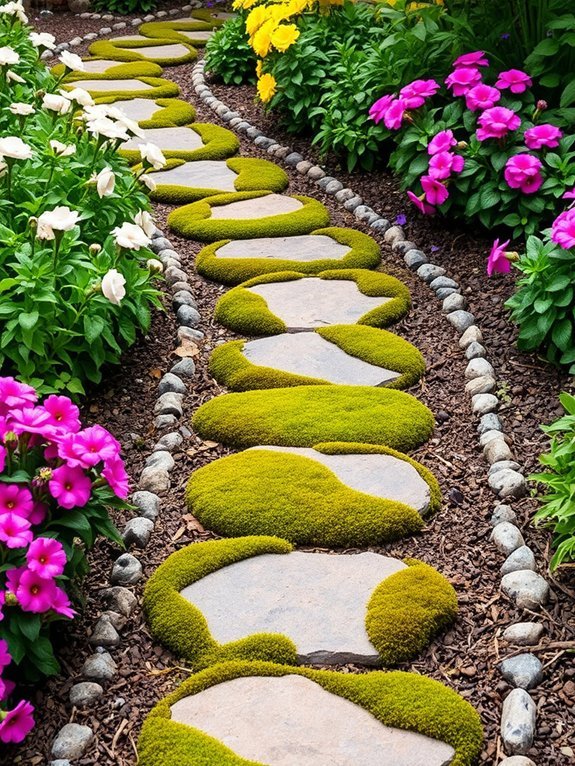
Creating a unique flow in your garden can be as simple as adding stepping stones along your pathways. These stones guide the eye and make your space feel cohesive. Choose materials like natural stone, concrete, or even reclaimed wood for an eco-friendly twist.
Start by mapping out your path, considering the distance between stones. A good rule of thumb is to space them about two feet apart, so it’s comfortable to walk. Dig shallow holes to set them in, ensuring they’re level with the surrounding ground to avoid tripping.
You can also personalize your stepping stones by painting them or embedding glass pieces for extra flair. This not only enhances the look of your garden but also creates a delightful experience for you and your guests.
Mulch Paths for an Eco-Friendly Option

For those looking to maintain an inviting garden without the added cost of hardscaping materials, mulch paths present an eco-friendly and affordable option. They break down over time, enriching your soil while providing excellent drainage and weed suppression. Plus, you can choose from various types of mulch, allowing you to customize your garden’s look.
| Type of Mulch | Benefits |
|---|---|
| Bark Mulch | Long-lasting, good for moisture retention |
| Wood Chips | Eco-friendly, decomposes slowly |
| Cedar Shavings | Repels insects, aromatic |
| Straw | Lightweight, easy to spread |
To create your mulch path, outline your desired shape, lay down landscape fabric, and fill with mulch for a beautiful and sustainable walkway.
Wooden Pallets for a Rustic Pathway
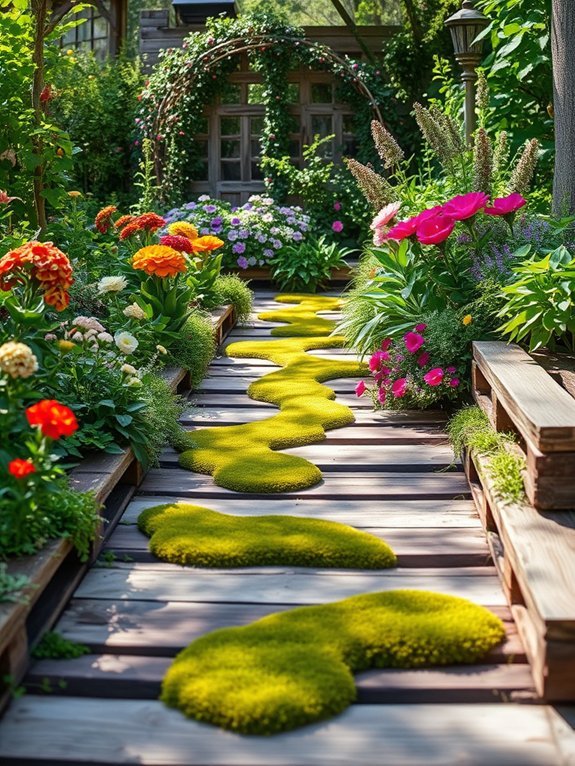
While you might think of wooden pallets as mere shipping materials, they can be cleverly repurposed to craft a charming rustic pathway in your garden. Start by collecting a few pallets and disassembling them carefully. Cut the planks to your desired lengths, then lay them out in a staggered pattern to create visual interest. You can leave the wood in its natural state for a rustic look, or paint it to match your garden’s aesthetic. To guarantee stability, sink the pallets slightly into the ground, and if desired, fill in gaps between with pebbles or mulch. This DIY project not only beautifies your garden but also promotes sustainability by reusing materials. Enjoy your new rustic pathway!
Recommended Items
Here are our recommended products and equipment to install—feel free to explore!
Concrete Block Patterns for a Modern Touch
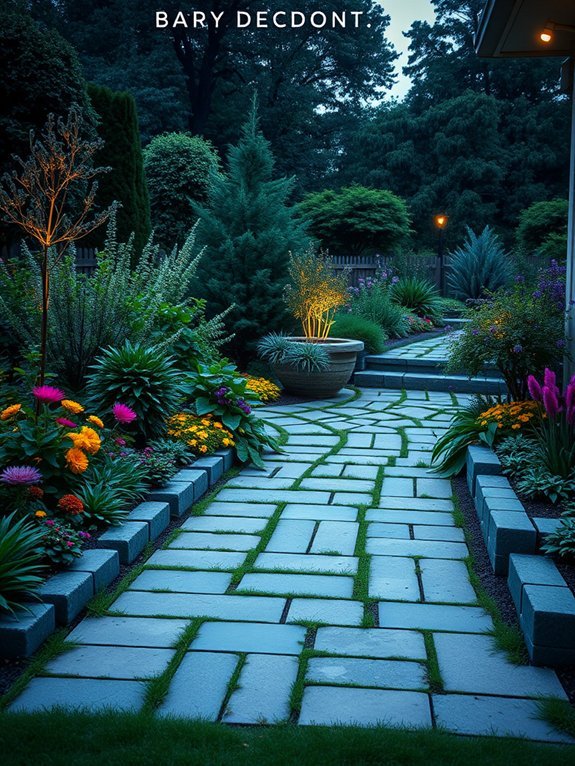
Concrete block patterns can elevate your garden pathway with a sleek and modern aesthetic. They’re not only durable but also offer versatility in design. Here are four pattern ideas you can easily implement:
- Staggered Layout: Arrange blocks in a zigzag pattern for a dynamic look.
- Grid Formation: Create a structured pathway by aligning blocks in a neat grid.
- Curved Pathway: Use rounded edges to provide a soft, flowing appeal.
- Mixed Textures: Combine smooth and textured blocks for visual contrast.
Step-by-Step Guide to DIY Garden Paths
Painted Rocks for a Whimsical Walkway
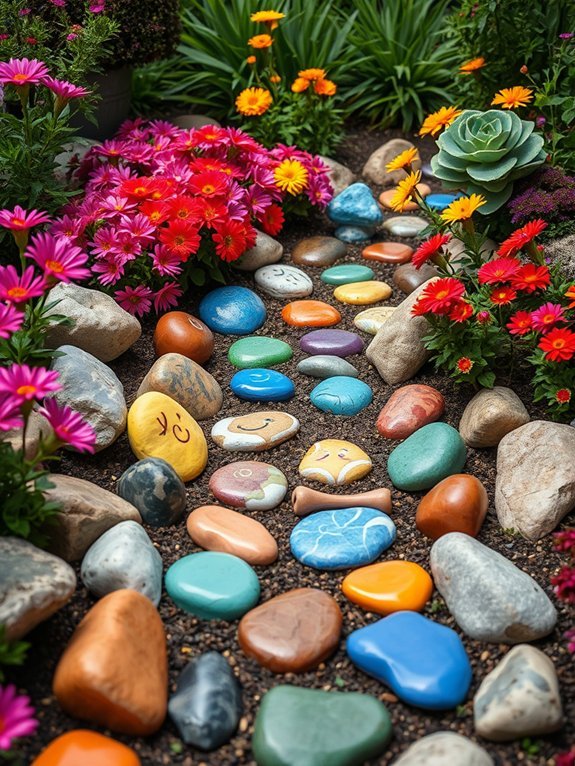
Transforming your garden path with painted rocks offers a fun and imaginative touch that’s sure to delight. Start by gathering smooth, flat stones that are easy to paint. Use weather-resistant paint to create vibrant designs, from cheerful flowers to playful patterns. Don’t worry about perfection; the charm lies in their whimsy! Once your rocks are dry, lay them out in a winding path through your garden. You can mix up the sizes for added visual interest and even incorporate words or quotes that inspire you. Secure them with a bit of gravel or soil to prevent shifting. This DIY project not only enhances your garden’s aesthetics but also gives you a personal touch that reflects your creativity. Enjoy your colorful walkway!
Flower Bed Edging as a Cost-Effective Path
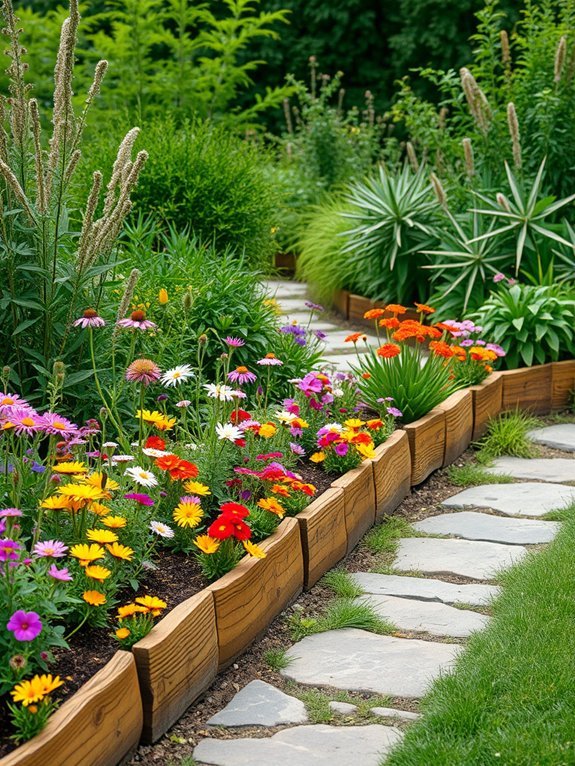
Creating a budget-friendly path with flower bed edging not only beautifies your garden but also defines the space in a functional way. This approach is simple and stylish, allowing you to transform your landscape without breaking the bank. Here’s how to get started:
- Choose Materials: Select natural stone, brick, or even recycled wood for a rustic touch.
- Plan Your Layout: Decide on straight or curved lines to suit your garden’s shape.
- Prepare the Area: Clear the ground of weeds and debris to create a smooth foundation.
- Set the Edging: Install your chosen material, ensuring it’s level and secure for stability.
With a little effort, you can create an inviting path that enhances your garden’s beauty!
Bark Chips for a Soft, Natural Surface
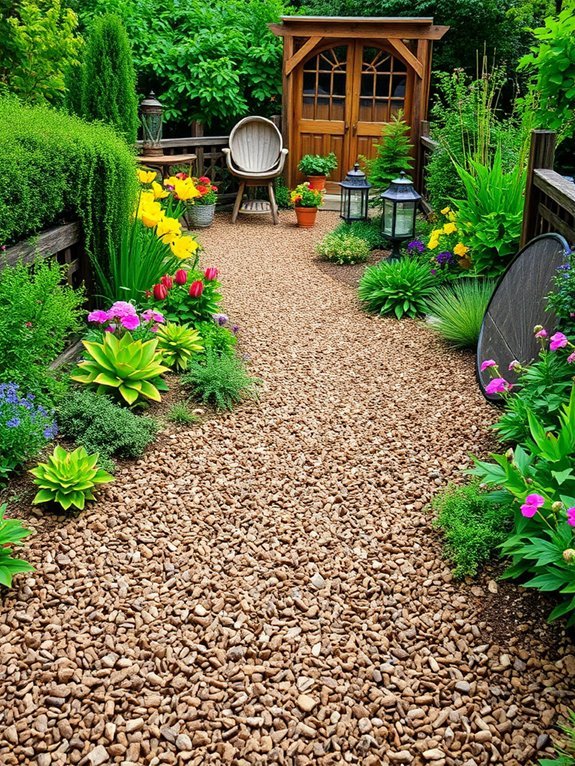
If you want to soften your garden path while adding a touch of nature, bark chips are a fantastic option. They’re budget-friendly, easy to install, and provide excellent drainage. Plus, they blend seamlessly into the landscape, creating a serene atmosphere.
Here’s a quick guide on choosing bark chips:
| Type of Bark Chip | Best Use |
|---|---|
| Cedar | Insect repellent, aroma |
| Pine | Affordable, lightweight |
| Hardwood | Durable, natural look |
| Cypress | Rot-resistant, long-lasting |
To lay your bark chips, simply clear the area of debris, create an edging, and pour a few inches of chips. You’ll enjoy a cozy and inviting path that enhances your garden’s beauty and functionality!
Mosaic Tile Paths for a Colorful Statement
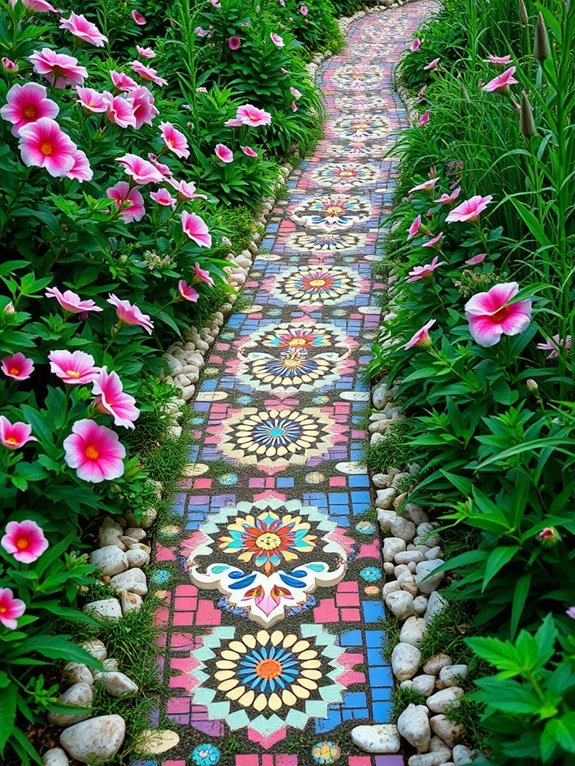
As you consider ways to infuse color and personality into your garden, mosaic tile paths stand out as a vibrant option. These paths not only enhance your outdoor space but also allow you to showcase your creative flair. Here are four ideas to spark your imagination:
- Colorful Patterns: Use tiles in various shapes and hues to create eye-catching designs, like spirals or geometric patterns.
- Theme-Based Designs: Choose tiles that reflect themes, such as beach-inspired blues or earthy tones.
- Recycled Materials: Incorporate broken tiles or dishes for a charming, eco-friendly touch.
- Accent Borders: Frame your path with contrasting colors to define the walkway clearly.
With a little effort, you can create a stunning mosaic that welcomes visitors to your garden.

